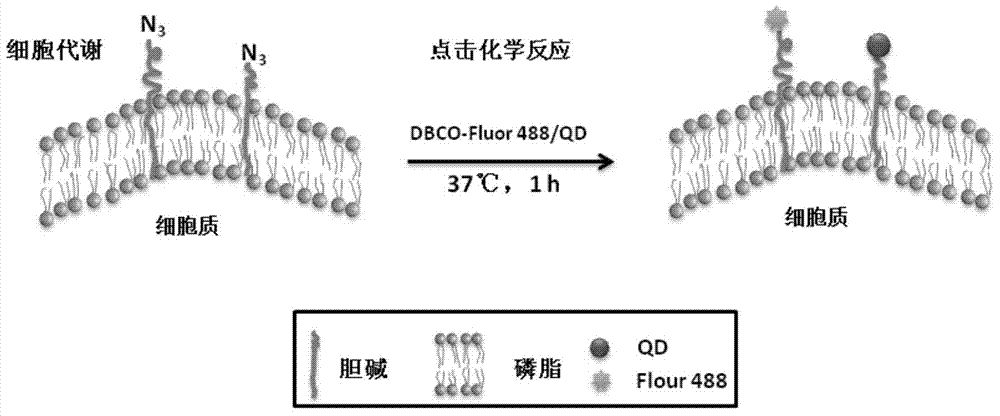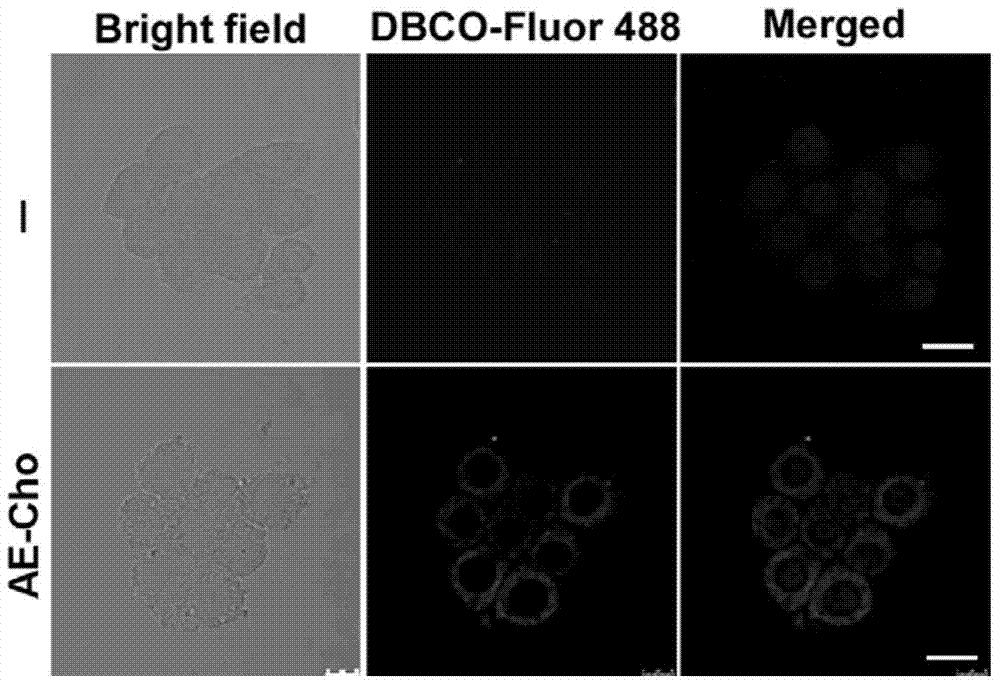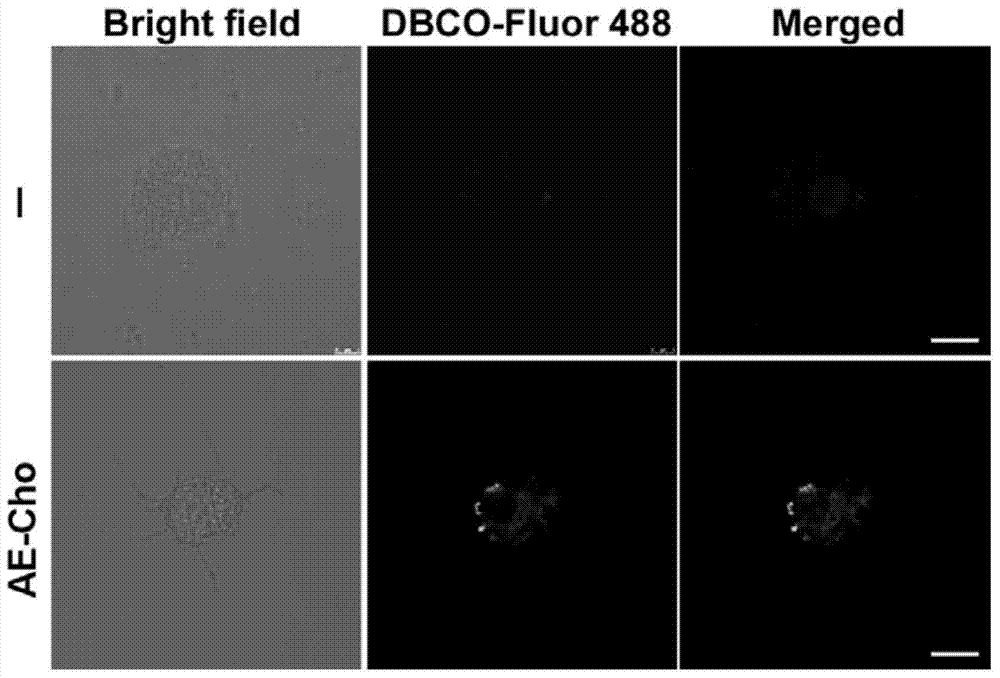Fluorescent labeling method for living organisms having cell membrane structures
A technology of fluorescent labeling and fluorescent markers, applied in the field of fluorescent labeling, can solve the problems of large influence on biological activity, low efficiency, and cumbersome two-step labeling operations
- Summary
- Abstract
- Description
- Claims
- Application Information
AI Technical Summary
Problems solved by technology
Method used
Image
Examples
preparation example Construction
[0029] The preparation method of the above-mentioned choline analogue containing azide group can be synthesized by referring to the method disclosed in the literature Analytical chemistry 201385 (10), 5263-5270. For the specific preparation method, please refer to the content of raw materials and reagents in the following examples.
[0030]The above-mentioned choline analogue containing an azide group has an azide group at one end for click chemical reaction; the other end is a choline molecule, which can participate in the lipid metabolism of cells. The above-mentioned choline analogs containing azide groups are used to modify organisms. This method has little impact on the activity of organisms. Among them, choline belongs to the components of cell membranes and participates in the biological metabolism of organisms. Compared with the large-volume DBCO group, the azide group has a smaller volume and has less impact on the activity of organisms.
[0031] In step S01, the amou...
Embodiment 1
[0061] S11. Raw cell264.7 cells were modified with choline analogues: first, the Raw cell264.7 cells were washed twice with PBS buffer, and the above-mentioned corresponding fresh medium was replaced, and then choline with a final concentration of 1 μg / mL Alkaline analog modification reagent AE-Cho was co-cultured with Raw cell264.7 cells, specifically incubated in a 5% CO2 incubator at 37°C for 24 hours, then washed with PBS buffer to remove excess choline analog modification reagent, and added fresh culture medium, spare. Wherein, the molar ratio of Raw cell264.7 cells to choline analogues is 1:10.
[0062] S12. Labeling Raw cell264.7 cells with fluorescent dyes modified by DBCO groups: washing the cells modified with choline analogues obtained in the above step S11 with PBS buffer twice to remove residual choline analogue modification reagents; Then add DBCO-Fluor488, a DBCO-modified fluorescent dye whose molar mass is 10 times that of Raw cell264.7 cells, into the above c...
Embodiment 2
[0064] S21. Modification of dendritic cells with choline analogues: first wash the dendritic cells twice with PBS buffer, replace the corresponding fresh medium above, and then add choline with a final concentration of 0.5 μg / mL The analog modification reagent AE-Cho was co-cultured with dendritic cells, specifically incubate in a 5% CO2 incubator at 37°C for 24 hours, then wash off excess choline analog modification reagent with PBS buffer, and add fresh culture Base, spare. Wherein, the molar ratio of dendritic cells to choline analogs is 1:10.
[0065] S22. Label dendritic cells with fluorescent dyes modified by DBCO groups: wash the cells modified with choline analogues obtained in the above step S21 twice with PBS buffer to remove residual choline analogue modification reagents; then Add DBCO-Fluor488, a fluorescent dye modified by DBCO groups whose molar mass is 10 times that of dendritic cells, to the above cell culture medium, and incubate at 37°C for 1 hour to carry ...
PUM
 Login to View More
Login to View More Abstract
Description
Claims
Application Information
 Login to View More
Login to View More - Generate Ideas
- Intellectual Property
- Life Sciences
- Materials
- Tech Scout
- Unparalleled Data Quality
- Higher Quality Content
- 60% Fewer Hallucinations
Browse by: Latest US Patents, China's latest patents, Technical Efficacy Thesaurus, Application Domain, Technology Topic, Popular Technical Reports.
© 2025 PatSnap. All rights reserved.Legal|Privacy policy|Modern Slavery Act Transparency Statement|Sitemap|About US| Contact US: help@patsnap.com



